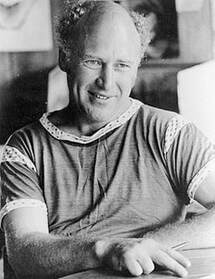 Beyond the Cuckoo’s Nest: Oregon Author Ken Kesey (Previously published on Oct 29, 2018) Most American readers are familiar with Ken Kesey's novel, One Flew Over the Cuckoo's Nest, which was first published in 1962, and more people still know the title through the 1975 film that won five Academy Awards. Beyond that familiar narrative, though, less is known about the trendsetting figure responsible for this classic novel. Let's dive into what makes Kesey one of Oregon's most provocative authors. Born in Colorado in 1935, young Kesey settled with his family in the small town of Springfield, Oregon, near Eugene. His childhood was a rugged one, involving a great deal of time spent outdoors fishing, hunting, and otherwise exploring the rural surroundings. This rustic setting contributed to the hardnose, individualistic streak that would later define his perspective as a writer. When Kesey first enrolled in college at the University of Oregon, he was more focused on playwriting and screenwriting than in penning the next Great American Novel. Eventually, however, he shifted his focus from communications to literature, leading to his enrollment in Stanford University's Creative Writing Center after graduation. There, he studied under Wallace Stegner, a Pulitzer Prize-winning author and historian known as "The Dean of Western Writers," and Malcolm Cowley, an influential writer, editor, poet, and literary critic. His professors were not the only source of inspiration, though; Stanford also connected Kesey with notable fellow students including Larry McMurtry, Ken Babbs, Ed McClanahan, Robert Stone, and Wendell Berry. This was a formative period in Kesey's life in two primary ways. One, he developed a sense of how he compared to his contemporaries as a writer. He did not fit in seamlessly amongst his cohorts at Stanford; on the contrary, director Stegner reportedly saw Kesey "as a threat to civilization and intellectualism and sobriety." Fellow student Nancy Parker described their seminars as being divided between "the intellectuals who had read some stuff and the barbarians who had never read anything [and] they were proud of it; [they] thought you sullied your style if you read anybody else." Kesey would not accept the status quo and challenged conventional wisdom. To him, individual expression was paramount. A second essential development for Kesey in this time was drug experimentation. For $75 a day, he volunteered for experiments at a veteran's hospital where doctors monitored reactions to psychoactive drugs. Kesey began to believe that hallucinogens were the key to understanding oneself, others, and society at large. He noted, "It's such a good drug in that I am suddenly filled with this great loving and understanding of people. [The drug] seems to give you more observation and more insight, and it makes you question things that you ordinarily don't question." Kesey pursued psychedelic drugs in everyday life outside the hospital as well; his "Acid Test" gatherings LSD experimentation parties became famous. In the summer of 1960, Kesey acquired employment at the hospital as an orderly. Slow work on his overnight shifts allowed him to work on a project that became "One Flew Over the Cuckoo's Nest," his first and most famous novel. Set in Salem, Oregon, it details the lives of patients in a mental institution and raises questions around the conflict between individuals and modern society, or individual expression versus conformity. It was commentary on American consciousness at the time, on the emerging clash between generations as young people rebelled against the stoicism of the fifties and embraced the potential revolution of a new decade. With help from Cowley at Stanford, Viking Press published the book in February 1962 to immediate success. Kesey's second title, an experiment in narration called “Sometimes a Great Notion,” was again set in Oregon. While it did not achieve the name recognition of Cuckoo's Nest, many critics argue it's better. Barry H. Leeds, author of Ken Kesey, states, "In terms of structure, point of view, and theme, Great Notion is more ambitious, more experimental, and ultimately more successful." The book features rich, evocative prose highlighting its Pacific Northwest setting: "Oregon October, when the fields of timothy and rye-grass stubble are being burned, the sky itself catches fire. Flocks of wrens rush up from the red alder thickets like sparks kicked from a campfire, the salmon jumps again, and the river rolls molten and slow. Down river, from Andys Landing, a burned-off cedar snag held the sun spitted like an apple, hissing and dripping juices against a grill of Indian Summer clouds. All the hillside, all the drying Himalaya vine that lined the big river, and the sugar-maple trees farther up, burned a dark brick and over-lit red. The river split for the jump of a red-gilled silver salmon, then circled to mark the spot where it fell. Spoonbills shoveled at the crimson mud in the shallows, and dowitchers jumped from cattail to cattail, frantically crying “Kleek! Kleek!” as though the thin reeds were as hot as the pokers they resembled. Canvasback and brant flew south in small, fiery, faraway flocks. And in the shabby ruin of broken cornfields rooster ringnecks clashed together in battle so bright, so gleaming polished-copper bright, that the fields seemed to ring with their fighting. This is Hanks bell." Kesey went on to publish more books, including essays collections, short stories, other novels, poetry, and a children's book before his death in Eugene at age sixty-six, but these first two titles define his strongest legacy as a writer and thinker. They also perhaps not coincidentally correspond with the period of his strongest influence on American society and in contributing to the 1960s counterculture. Writer Tom Wolfe detailed Kesey's life, particularly a 1964 drug-fueled, cross-country road trip he took with friends in The Electric Kool-Aid Acid Test (published 1968). The book, which helped pioneer the New Journalism literary style, established Kesey as a cult figure connecting the 1950s Beat Generation and the next decade's hippies. In addition to his status as a psychedelic icon and influential Oregonian, Kesey also left a legacy as an author who lived as he wrote. To him, developing yourself as an author paralleled how you interacted with the world around you, not just how you wrote. He saw writing more than an experience of words on a page; it was something that reflected all aspects of life. From his childhood in Springfield to his time in California and back to Oregon, Ken Kesey lived a lifestyle authentic to his sense of self, whether it was exploring his rural surroundings in Springfield, taking acid and writing in Palo Alto, or volunteering at the Eugene library to engage with the local community in his senior years. This authenticity is what gives Kesey his place in history as a renowned Oregon author. 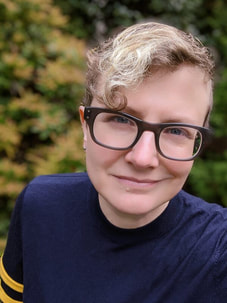 Featuring author Jenn Reese Interviewed by John Repplinger December 1st, 2023 Jenn Reese (they/she) writes speculative fiction for readers of all ages. Jenn is the author of the middle grade novel Every Bird a Prince, A Game of Fox & Squirrels, and the Above World trilogy. Puzzleheart, their next, will be out in 2024. They also write short stories for teens and adults. Jenn lives in Portland, Oregon where they make art, play video games, and talk to the birds. Icebreaker: If you could choose to be an animal, what would you choose to be and why? Your icebreaker is one of the hardest questions possible! Ever since I was young, “shape-changing into animals” has been my most wished for superpower. However, since you’re making me choose and birds feature in almost all my work, I’ll pick a songbird. Perhaps a jaunty little nuthatch that darts with total confidence through the trees and often pauses to sing. I’m envious of their freedom and vocal talents, as well as the unwavering sense of purpose they display with each and every movement. The writing process varies a lot between authors. Can you explain what the average writing time is like for you? Do you have any unique writing customs such as a must-have favorite beverage on hand or time of the day to write? First, I’ll have to instantly dispel the idea that I have an “average writing time.” When I was starting out, people said “Real writers write every day,” and that faulty adage hurt me far more than it helped. Some days I want to luxuriate in new words early in the morning, or late at night. Some days I fall into the trap of revising what I’ve already written over and over. Some days I have to do freelance work to pay the bills, or deal with life stuff, or I simply want to finish a book I’ve been reading and then tell everyone about it. I also practice other art forms, such as drawing and linocut and ceramics, and I try not to minimize how much all forms of creativity are connected when I spend a three-day burst doing nothing but hunching over my sketchbook. So no, sorry, no consistency at all, I’m afraid. Having been recently diagnosed with ADHD, I can see how I arrived at this place. My task now is to not feel guilty if I wake up and want to sketch instead of write, or if I decide I have to rearrange all my art supplies. I tell myself I’m fighting capitalism and the idea that our worth is tied to our productivity, which helps a little. Most people are unaware that you are also an accomplished graphic designer with your own company that specializes in book cover design. Do you ever sketch concepts or schemes from your writing? And do your illustrations ever influence your stories? What I love about graphic design is how we can draw the eye across an image, how simplicity can imply complexity, how we can tap into common emotions and ideas with color and font choice and composition. I think distilling complex ideas into something understandable by more people is one of the through lines of my life as a creator. As an illustrator, I have tremendous imposter syndrome. As recently as last year, I would never show someone a piece of art without tacking on “I’m only an amateur artist” or “I’m just learning” or “I know it’s not any good.” When I started writing, I had the hubris of not knowing how bad I was. (I got better.) As an artist, I’ve leaped straight into the self-doubt portion of the journey. But I’m working on this. One of my goals for 2023 was to pursue art (not just graphic design) more intentionally. And, amazingly, I was asked to illustrate one of my stories for an anthology, and my book editor at Henry Holt asked me to draw the interior illustrations for my middle grade novel, Puzzleheart. In short, I’m extremely excited to start integrating my art and writing more. I feel like there are whole new pathways opening up in my brain when I think in both words and pictures. Many of your characters are animals that talk such as Ashander from A Game of Fox & Squirrels. Do you have any specific authors that you turn to for drawing inspiration about animal characters? And what do you do when you hit a scene where you’re not sure how an animal character might react/behave/interact with other characters? T.H. White’s The Once and Future King was certainly one of my early influences — young Wart changes into different animals and learns from them, and that’s the dream, right? That book reinforces the idea that humans and animals are inseparable, and I’ve been writing them both ever since. Even so, I was nervous to write a book with talking animals, as many readers hate them, especially adults. And then I read the most brilliant essay by the legend herself, Ursula K. Le Guin. “Cheek by Jowl: Animals in Children’s Literature” has so many brilliant insights that I urge everyone to read it for themself. Here is one of them: “Children have to be persuaded, convinced, that animals don’t talk. They have to be informed that there is an impassable gulf between Man and Beast, and taught not to look across it. But so long as they disobey orders and go on looking, they know better.” I love that so much! And in terms of writing, my one trick is this: do not allow your human characters to be astonished that animals can talk for very long. When they accept this reality, the reader will too. Because we have always lived and communicated with animals, and giving them actual words requires only the smallest of leaps. Do you base any of your characters on people you know? I think almost all writers are collectors. Our brains house scraps of dialogue and interesting character traits and Polaroids of fun locations paper clipped to index cards and shoved into a massive card catalog, willy-nilly. All my characters have something of me in them, whether I want them to or not, but none of them are entirely me. Even in A Game of Fox & Squirrels, which is my most personal work to date, the characters only have pieces inspired by real people. The fun is creating something fresh from little bits of truth. What is the most challenging aspect of writing middle-grade and young adult books? I don’t find writing for middle-grade and young adult audiences to be any different than writing for adults, except that I feel a deeper responsibility to make sure my metaphors and messaging is intentional. Adults are more practiced at reading something and disregarding it if they disagree with its premise or worldview. Many adults love anti-heroes who are ruthless serial killers, for example, without ever feeling like those sorts of people or those activities are condoned. Kids are still working on building their critical reading muscles, and writers have to be more careful with how they approach their material. Your Above World series portrays vivid scenes of a futuristic sci-fi life where humans have adapted physically to a post apocalyptic world. How do you select your locations and scenes? How do you develop your rich sci-fi and fantasy worlds? I grew up inhaling mountains of fantasy and science fiction novels, and playing Dungeons & Dragons, and I can’t really remember a time when I wasn’t creating worlds and characters and asking “what if?” I’m a very visual writer in that I picture every scene in my mind as I’m writing it. I have to know what it looks like, and building those “sets” is a huge part of the fun for me. The Above World books took years to write, and I felt as if I were living in that world, with its wild deserts and oceans and mountaintops. I’ve been writing contemporary fantasies lately, and I have to admit, it’s a lot easier to describe a chicken coop than an underwater city. Your stories touch on heavy themes such as domestic violence, self-doubt, and identity which can be much more challenging to write than adult books. Why did you choose to write a children’s book on these topics? For some books, I am writing the stories I wish I’d found when I was young. I had no idea that growing up in an abusive household was something other people were experiencing too. I had no idea that this idea of “don’t talk, don’t tell anyone” was how abusers controlled their victims. Even more fundamentally, I didn’t understand the concept of unconditional love. I’m sorry to say that there will always be kids out there in that same boat, and I wanted to throw them a life preserver. For Every Bird a Prince, I wanted to speak openly about aromanticism and asexuality, because romance and sex are considered universal desires and goals in our society, and this is simply not the truth. Giving readers words for their experiences is giving them choices and power, and kids need those things more than anyone. What do you hope readers will take away from your books? If you could talk directly to your readers, what would you say? I hope my readers are entertained, first and foremost. I hope they laugh at least once. I hope they get a sense of warmth and belonging, and they realize that a wonderful family can be made or found. I hope they feel seen. I keep thinking about what I would say to them directly, and this is hard! Kids are all so different. There are some who will read my books and see themselves, and some who might recognize their friends or family members. There are many kids who will get nothing from my books, and that’s okay, too. Maybe I’d say, “Hey, thanks for reading my book!” Do you have any new books or projects that you’re working on that you’d like to mention? I sure do! Puzzleheart (learn more on Goodreads) is the story of a nonbinary, science-obsessed kid who goes head-to-head (head-to-ceiling?) with a sentient “puzzle house” during a strange spring snowstorm. It’ll be out on May 14th, 2024, from Henry Holt. Thank you so much for these wonderful questions! 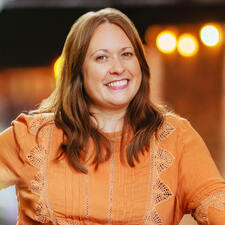 Featuring author Michelle Sumovich Interviewed by John Repplinger November 14th, 2023 Michelle Sumovich is the author of picture books ONE MORE JAR OF JAM (Dial Books for Young Readers, 2023), EVERYTHING IS FINE (HarperCollins, 2024), and I HAVE THREE CATS (Dial Books for Young Readers, 2024). Michelle has a background working in bookstores and library program development for young children, as well as years of experience writing lyrics and music for children and adults. She lives in Portland, Oregon with her husband, two children, and more than three cats. Icebreaker: If you could choose to eat any dessert in the world, what would it be and why? I’ll lean nostalgic and go with sour cherry pie á la mode for a delicious flakey-fruity-creamy combo. Growing up, I’d stake out the dessert table at family gatherings and sneak bits of crust until it was time to cut into the pies. As I remember it, I always saved the cherry pie for last because that’s the flavor that ought to linger. So tell us, what inspired you to start writing children’s books? I worked at a used bookstore in Lawrence, Kansas about 20 years ago– The Dusty Bookshelf. That’s where I first fell in love with illustrated children’s books, particularly those from the 1960s and 70s. I think the first one that really spoke to me was Rain Makes Applesauce by Julian Scheer and Marvin Bileck. It was so beautiful and weird, and that intersection was very appealing to me. Tomi Ungerer and Barbara Cooney were some other faves that I discovered during that time. I was amazed by how they could tell a whole story with deep worlds and commentaries in such a short span of pages. When my first child was born, I started spending more time reading books by modern authors and illustrators and thinking about the format, and I narrowed in on books which were a bit subversive or strange, or books that told the truth in exciting ways. I realized that they reminded me of those older books written 50 years prior which I loved so much, and it was that connection that made me want to be a part of this work. It’s also what keeps me going– trying to write enjoyable books that are a little wise but not bossy. Debut authors have a much harder time breaking into the publishing industry. What have been the most challenging aspects of writing and publishing for you? A couple things– the first few years that I was writing, I was very focused on learning craft, generating work, and revising. The best time to work was after my kid was in bed, so I wasn’t getting very much sleep in the beginning. It was taxing, but I loved that development period. Since I was enjoying the process, I didn’t sweat the “breaking in” too much, nor the criticism and rejection which can sometimes be a sticking point, so that helped. I signed with my agent, Hannah Mann (Writers House), in 2019 and we sold the second book we went out with. It was a thrill making my first sale, but finding patience during the four year period before its release was more challenging than I anticipated. I had this kind of self-imposed expectation to stay hyped up about the book for four years, which wasn’t really reasonable for me. But luckily I was able to refocus on development, and just kept getting excited about new work. In your first children’s book, One More Jar of Jam, the writing is filled with beautifully rich and poetic descriptions such as “Gone to sticky Grandma’s table.” The reader feels how the summer is “fruitless and dry as toast” after a storm destroys the family's mulberry tree. How has your experience with writing lyrics and music for young children helped you with writing this book? Thank you! I love this question because, to me, there’s a subtle rhythm built into this book which is present every time I read it aloud, and I wonder if some of that comes out when others read it, too. Writing song lyrics requires a lot of carving up the thing you want to say, so it fits into a line or a verse. In this book I thought a lot about how many syllables certain words had, and where the syllabic emphasis fell, to create a lull in the text, even though it’s not a rhyming book. I thought about whether words were heavy or light, slow or fast. For example, it’s difficult to read “climb bending branches” aloud at a faster pace than “wicked winds rage through your town,” so in the story, there’s a rhythmic ease before the storm and a quickened pulse as the storm draws close. I suppose the refrain of the line, “If you ever have a mulberry tree,” also lends itself to a songlike structure, since you could think of it as kicking off each new verse. I actually started recording a song trailer for this book in the eleventh hour, but when I didn’t complete it before launch, the project kind of fizzled. I’m fond of the song, but not everything gets made! Maybe there will be a song for the next book! Another important aspect about this book is its theme about interracial families. Can you talk about this? Yeah! I love to see it. When I submitted my manuscript, I didn’t include any context about the main character’s racial or gender identity. I am a white person, but/and my story doesn’t call for a white character. I’m happy that Gracey Zhang, the book’s illustrator, didn’t choose whiteness as a default. This story is about an experience, and I love to see it told with all the vibrance of this particular family and community. What do you hope readers will take away from your book? If you could talk directly to your readers, what would you say? I’m happy for readers to take whatever they need from this book. There’s a bit of an emotional rollercoaster at play in the story. Things get bad for the main character, and they mourn the loss of their important tree for a good long while, but there are also some slow and silent glimmers of hope. I think that’s how life is– sometimes we experience loss, sometimes things feel unbearable, and when we’re ready, we can find hope in celebrating the things that can no longer celebrate themselves. According to your website, you’ve been involved with children’s library programming. How did you get involved with libraries and what kind of things were you involved with at the library? At 15 years old, my first job was in a library, actually, and I went on to work in three other public library systems after that. In Oregon, I worked for the Multnomah County Library, and had the opportunity to plan and lead an arts and crafts program for children in the Rockwood community. I loved that work. Many toilet paper rolls and sequins were given a new, exciting life in my tenure there and I was constantly (gleefully) slathered in glue. To support the program, I looked forward to finding tie-in material and getting books into kids’ hands. I also organized passive programs like poetry stations and games and created displays and bulletin boards. Basically, I gobbled up any opportunity to do creative work to connect the library with the community. Families in particular were so receptive to those services and at the time there was a fair amount of autonomy among neighborhood branches, which made for happy staff and patrons. You mention having your own children and more than three cats. How do you balance writing with life activities? Quality childcare and educators! As I write this, my oldest kid has been home for two weeks due to a teacher’s strike in Portland, which has required a big shift in priorities. I’m suddenly integrating home education and picket line education into my schedule, and not a ton of writing is taking place. I’m fortunate for the flexibility that comes with being a writer, but when things come up, I have to be very intentional about keeping work on the agenda because the pressure to hustle toward the next project or deadline always remains. I’m not sure if a balance between writing and parenting is something that really exists, but I’m getting better at pivoting between the two. As long as I’m chipping away at work, it usually feels like staying afloat. I’m eager to get our kids back to their amazing teachers and get back to my typical work routine. Two other picture books are slated to be published in 2024 entitled, I Have Three Cats and Everything is Fine. Can you tell us about them? Do you have any other books or projects that you’re working on that you would like to mention? Yes! I’m really excited about the picture books coming out next year! EVERYTHING IS FINE is coming out first, in October 2024. It’s a story about a chaotic child and her exhausted mother, with a healthy dose of magic elixir, missing persons, and spaghetti. I’m so excited about it. It’s illustrated by Sarah Jacoby (Forever or a Day, The Important Thing About Margaret Wise Brown) and it turned out extremely beautiful and weird– just how I like ‘em! My other upcoming picture book is I HAVE THREE CATS, coming in Nov/Dec 2024. It’s a sweet and slightly ornery story about a child with three darling cats, and the stray that appears in the yard and upends their lives. It’s a semi-autobiographical account of lacking boundaries when it comes to adorable animals. Comic artist Laura Park (Unstoppable) is the illustrator on this one, and it’s so sweet and funny! In addition to those, I just sold the text for my first graphic novel! I can’t say much about it yet, but the editorial consensus seems to be that it’s “unhinged,” which I feel really good about. I’m also taking my first drawing class, and imagining what it would be like to someday illustrate one of my own manuscripts. Gotta start somewhere! EVERYTHING IS FINE, by Michelle Sumovich, will be published in October 2024
 Featuring author Makiia Lucier If you are looking for YA historical fantasy with murder twists, your next favorite novel may be by author Makiia Lucier. Her stories are inspired by history and mythology, and they have received high praise, have been called “brilliant” (Booklist), “moving,” (New York Times), “masterful” (Horn Book), and “breathtaking” (School Library Journal). Makiia grew up on the Pacific island of Guam, not too far from the equator, and holds degrees in journalism (University of Oregon) and library science (University of Wisconsin-Milwaukee); she is a former librarian. She has also lived in Saipan, Colorado, Italy, New Hampshire, Idaho, and North Carolina. As of 2023 she lives with her family in Portland, Oregon. Makiia never considered writing fiction until she was in her 30s. She had always loved the Indiana Jones series which may have helped influence her writing, as well as her interests medieval mapmaking and travel. Isle of Blood and Stone is actually a collection of things that she has found fascinating. When asked in an interview (Nerd Daily) about where the inspiration for Years of the Reaper came from, she replied: "My first novel came out in 2014 and takes places right at the start of the 1918 Spanish Flu pandemic. While I was writing it, I found myself wondering, 'Well, what happened to the survivors? To those forced to carry on? What’s their story?' That is what Year of the Reaper is ultimately about, about the survivors of a terrible medieval plague." Makiia's books can be found on many notable lists, including the Kids’ Indie Next and the American Library Association’s ‘Best Fiction for Young Adults.’ Currently, her five novels include: A Death-Struck Year (2016), Year of the Reaper (2001), Isle of Blood and Stone (2018), Song of the Abyss (2019), and Dragonfruit (2024). Written by John Repplinger Content is taken from Makiia's home page, Nerd Daily., and Utopia State of Mind. 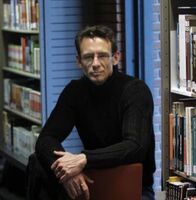 Beyond Fight Club: Featured Author, Chuck Palahniuk (Previously published on June 15, 2018) "The first rule of Fight Club is: you don't talk about Fight Club." Made popular by the movie of the same name, Chuck Palahniuk made his debut with Fight Club in 1996. Written as a response to his first manuscript an older version of what would become Invisible Monsters being rejected by his publisher, Fight Club is a story about the lost connection between men and society. And although Fight Club is Chuck Palahniuk's most famous work to date, he also has a personal connection to the Pacific Northwest and has a strong connection to the Oregon literary scene. Chuck Palahniuk was born in Pasco, Washington in 1962. He was raised near Burbank, Washington, but went to live with his siblings on his grandparents' cattle ranch in 1976 after his parents' divorce. Palahniuk graduated from the University of Oregon, where he studied journalism. While his career in journalism might not have taken off, it was there that he learned to listen to others and to convey their stories. In a 2017 interview for MEL magazine, Palahniuk describes the correlation between his education and his eventual career. "My job is to listen to people at parties and to identify their stories and to find a commonality in the pattern between them. Because when someone tells an anecdote that goes over well, it evokes other people to tell almost identical anecdotes from their own life. Then you choose the very best of these to demonstrate a very human dynamic. In a way, what I do isn't so much invent things as it is identifying them. Later, I just put them together in a report that looks like a novel." Palahniuks writing style has been described as "dark," "satirical," and "transgressional." His works focus on characters feeling confined by society and societal norms. In addition to Fight Club, Palahniuk has published twenty fiction titles, including Damned, a story described as "The Breakfast Club in Hell" about a group of teenagers literally walking through hell. Invisible Monsters was published in 1999, and a remixed version was re-released in 2012. Palahniuk describes Invisible Monsters in the same MEL interview, explaining that "its all about that panicky feeling that this beautiful thing isn't going to be beautiful forever and that you've got to transition that beauty into a different, more lasting form of power." Most recently, Palahniuk has been transitioning to graphic novels. Fight Club 2 was published as a graphic novel by local Portland powerhouse Dark Horse Comics (and according to his Twitter, another installment may be on the way). Palahniuk's newest book, Adjustment Day, was released by W.W. Norton. As a native of the Pacific Northwest, Palahniuk has cemented himself into the local literary scene. He received the Pacific Northwest Booksellers Association Award and the Oregon Book Award for Fight Club, and six years later, his horror satire Lullaby was also a Pacific Northwest Booksellers Association Award winner, as well as a nominee for the Bram Stoker Award. Besides working closely with the comics scene in the Portland area, he's also an active member of a local writing group and has given numerous interviews about Portland culture and area hotspots. (He was on Anthony Bourdain's television show, No Reservations, where he led the chef through some popular Portland locations.) His love for Oregon has also influenced his writing, most noticeably in his nonfiction title Fugitives and Refugees: A Walk in Portland, Oregon. [To date, Palahniuk has published 19 novels, three nonfiction books, two graphic novels, and two adult coloring books, several short stories, and has had five of his novels adapted into movies.] Palahniuk, a former resident of Portland, now lives in the Columbia River Gorge. Palahniuk is very active on Twitter (@ChuckPalahniuk) and Facebook, interacting with both his fans and other writers. Connect with him there, and look for his books in your local libraries and bookstores! 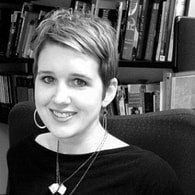 An Interview with Elissa Minor Rust (Previously published on March 23, 2018) Elissa Minor Rust, author of The Prisoner Pear: Stories from the Lake, a collection of twelve short stories set in Lake Oswego, is a well-loved, quirky English professor here in Oregon. Proud to be a Northwest author inspired by Oregon's natural beauty, she also works to inspire young writers every year. I had the privilege of catching up with her and asking a few questions. Q: What set you on the path toward becoming a writer? A: I knew for a long time that I wanted to be an English professor. I took creative writing courses during my first term of college and knew I had found my calling. I started out as a poet, but soon learned I enjoyed poetic prose in fiction more than poetry. I had some amazing mentors that got me where I am today. Q: How has the Oregon literary community helped shape you and your work? A: When I first moved back to Oregon after graduate school, I received a generous Oregon Literary Arts Fellowship that helped me finish my first book. I think Oregon is great about supporting its writers, and the community is lovely. I've met so many wonderful friends through the Portland writing community. Q: What about Oregon inspires you to write? A: I love everything about Oregon. My first book was set in a Portland suburb, and I had such a great time writing it. I also find when I need to escape to get inspiration to write, I can easily be in the mountains or at the coast. There is no greater inspiration than the natural world, and here in Oregon we have that in abundance. Q: What do you like most about teaching and encouraging others to write? A: I absolutely adore teaching. I knew I wanted to be a professor before I knew I wanted to be a writer. There is an energy in a writing classroom that's palpable, which makes me want to be a better writer and teacher. The most satisfying thing about being a professor is continuing to get notes from past students with news about their successes in the world of writing and literature. Q: What has teaching helped you learn about your own writing? A: Every time I teach a class, I am reminded anew about how one should approach the craft of writing. I talk about process a lot with my students, and how each person has to figure that out for themself. As I explained my own process to my students over the years, it struck me how my process has changed and evolved over time as I had children, taken on more responsibility at work, etc. Q: Is there anything you wish you had known when you started out? A: Honestly? No. I am tempted to tell my students these days how few jobs there are in creative writing and in the world of higher-ed, but then I think: what if someone had told me the realities of the job market I was going into? It might have scared me off. I'm lucky that it worked out for me--a full time tenured professor, chair of the English department, etc. If anything, I would have liked to have known how many different ways there are of working in this profession, and to not get discouraged if there are periods of time when your own writing ebbs and flows. Q: What piece of writing are you proudest of? A: There is a story in my short story collection (The Prisoner Pear: Stories From the Lake) called "Moon Over Water." Its my favorite of all my stories. People either love it or hate it" there's no in-between. Its magical realism and inspired by my interest in science and how people respond to the unknown. Q: What are some your creative goals now? I read on your website that you're working on a YA novel. How is that going? A: I am working on a YA novel and a memoir, sort of simultaneously. It is going slow but steady! We'd like to thank Elissa for joining us and sharing her experiences with our readers! |
AboutThe Oregon Library Association is proud to highlight authors who call Oregon their home. The mission of the Oregon Authors Project is to connect local authors to readers by providing information and resources about Oregon authors in one central location. More...
Archives
April 2024
Categories
All
|
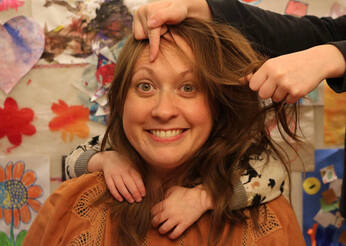

 RSS Feed
RSS Feed
